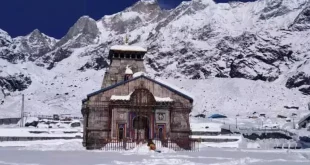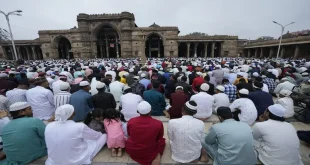After the death of former Prime Minister Dr. Manmohan Singh, the controversy regarding his funeral and memorial site has intensified. Congress has demanded that his last rites should have been performed at the same place where his memorial would be built. However, the Home Ministry has clarified that the government is committed to building a memorial commensurate with the stature of Dr. Manmohan Singh. According to sources, Manmohan Singh’s memorial will be built at the National Memorial, where the memorial of former Prime Minister Atal Bihari Vajpayee is also located.
National Memorial: What is the government’s policy?
The proposal for the National Memorial was passed in 2013 during the tenure of the UPA government. Under this, it was decided to build the Samadhi site for all VVIP leaders, including the President, Vice President and Prime Minister, at the National Memorial instead of near Rajghat.
Purpose of this decision
- Lack of space in Rajghat complex.
- The need for a centralized location for burial sites.
- Utilization of large land for the Samadhi sites already located near Rajghat.
The National Memorial is located at a distance of 1.6 kilometers from Rajghat. It is near the Samadhi of Giani Zail Singh and there is space reserved for all VVIP leaders.
Congress’s objection
Congress has raised the question as to why the last rites of Dr. Manmohan Singh were performed at Nigam Bodh Ghat. The party argues that his last rites should have been held at the same place where the memorial will be built. Congress President Mallikarjun Kharge and other leaders have also spoken to the Prime Minister and Home Minister in this regard.
Leaders like Navjot Singh Sidhu and Sanjay Singh targeted BJP and termed it as politics. Sidhu said, “When a person departs from this world, all differences should end with him.”
Details of grave sites at National Memorial
There are already mausoleums of many big leaders in the Rajghat complex and the surrounding land.
- Mahatma Gandhi (Rajghat): 44.35 acres.
- Jawaharlal Nehru (Santivan): 52.6 acres.
- Indira Gandhi (Shakti Sthal): 45 acres.
- Lal Bahadur Shastri (Vijay Ghat): 40 acres.
- Rajiv Gandhi (Veer Bhoomi): 15 acres.
- Chaudhary Charan Singh (Kisan Ghat): 22.56 acres.
Apart from this, the mausoleums of personalities like Giani Zail Singh, Chandrashekhar, and KR Narayanan are also located in the same area.
Contribution of Manmohan Singh: A look
Dr. Manmohan Singh is credited with taking the Indian economy to new heights on the global stage through the economic reforms of 1991.
- Laws like Mahatma Gandhi National Rural Employment Guarantee Act (MGNREGA) and Right to Information Act (RTI) reflect his leadership abilities.
- During his tenure many schemes like right to education and rural areas were implemented.
- Dr. Singh’s tenure as a Congress Prime Minister was the longest after Jawaharlal Nehru and Indira Gandhi.
History of land allocation for mausoleums
Before the 2013 proposal, separate lands were allotted for VVIP mausoleums.
- Rajghat Complex: Mahatma Gandhi.
- Shantivan: Jawaharlal Nehru.
- Vijay Ghat: Lal Bahadur Shastri.
- Place of power: Indira Gandhi.
- Veer Bhoomi: Rajiv Gandhi.
The National Memorial was intended for future use as a centralized mausoleum.
 look news india
look news india


